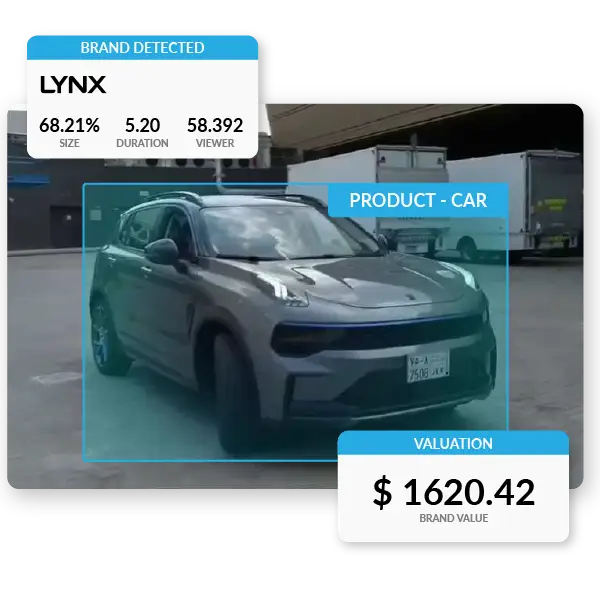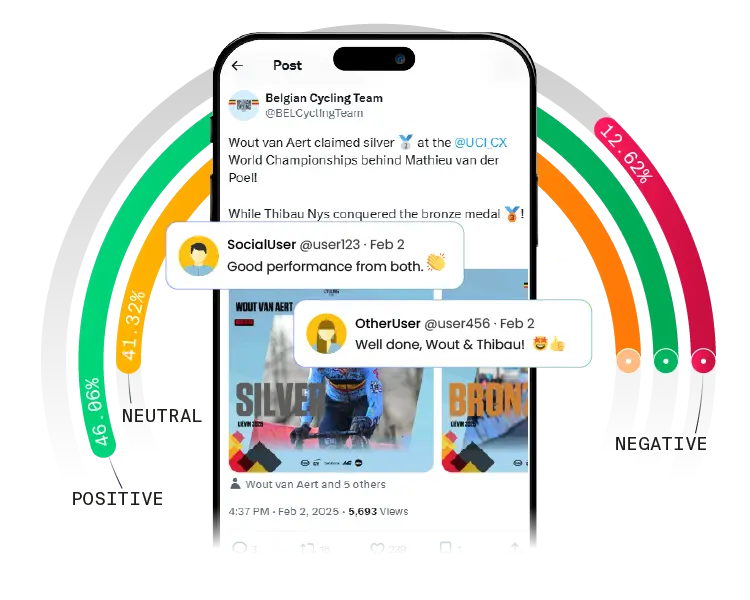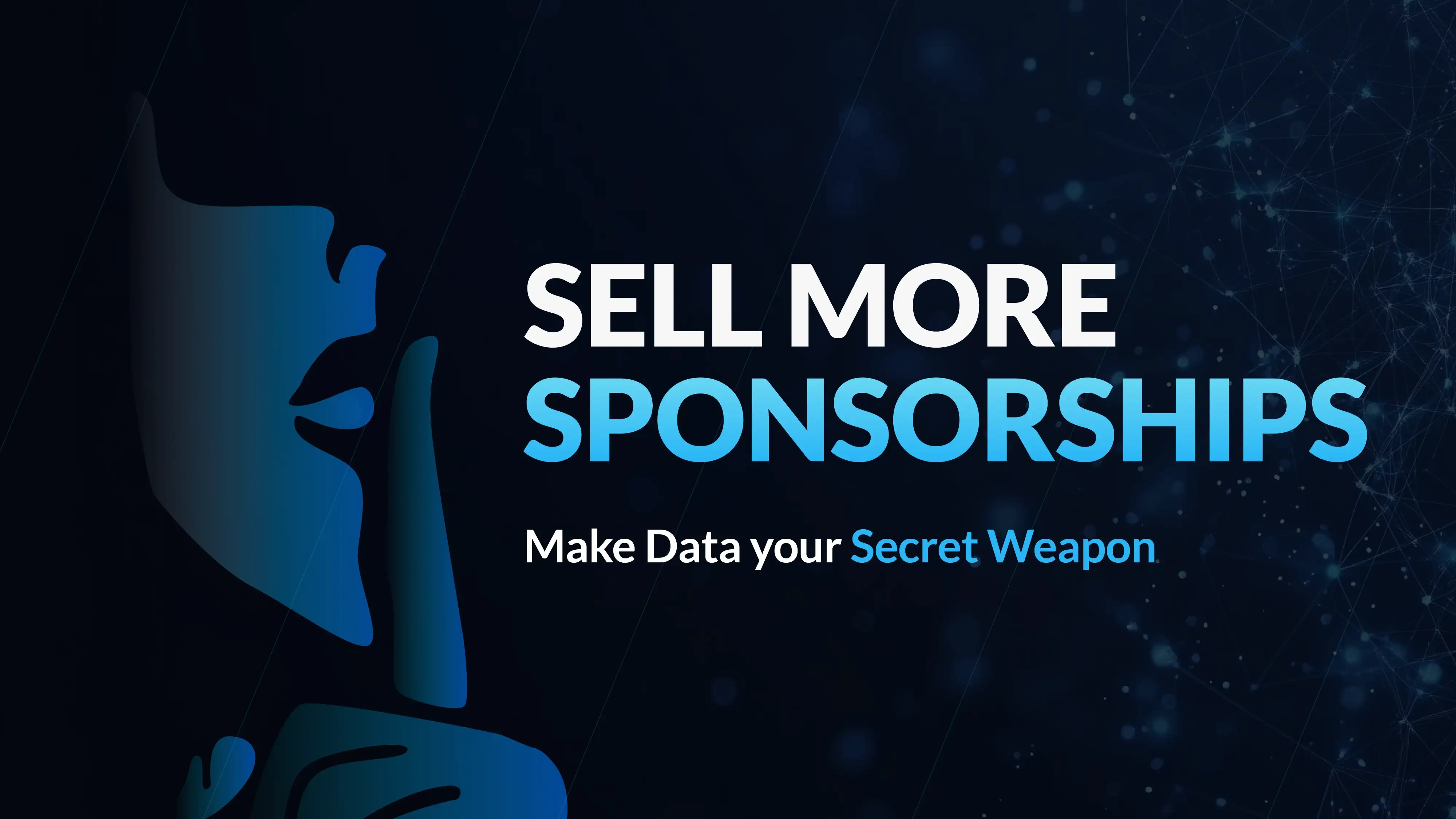Note: This article was published before our rebrand. You may notice our former logo or design elements.
In today's competitive sponsorship landscape, data is no longer just an asset, it's a powerful differentiator. As a partnership manager, you can harness the power of data to sell more sponsorships and make it your unique selling proposition (USP). By showing actionable insights and measurable value, you can demonstrate to potential sponsors why your offering stands out. Here's how you can effectively use sponsorship data to close more deals and build stronger partnerships:
1. Highlight data-driven decision making
One of the most compelling ways to attract sponsors is by showing how you use data analytics to bring results. Share examples of how data has helped optimize past sponsorships. This assures potential sponsors that their investment will be guided by evidence rather than guesswork.
Action Tip: Include data visualizations and case studies in your proposals that clearly illustrate your analytical capabilities.


2. Showcase Comprehensive Sponsorship Datasets
Access to detailed datasets covering teams, brands, events, and assets can set you apart from competitors. By benchmarking your sponsorship performance against industry standards, you can offer sponsors a clear view of where your opportunity fits in with the broader market. This context not only builds credibility but also helps sponsors understand the unique value your property provides.
Action Tip: Create reports that compare your sponsorship offerings with market trends and industry benchmarks to highlight competitive advantages.
3. Demonstrate ROI with Data
Sponsors are increasingly ROI-focused, and for good reason. By using data to quantify the value of previous sponsorships, you can show sponsors exactly what they stand to gain. Metrics such as media value, audience reach, engagement rates, and direct sales impact provide concrete evidence of success. The ability to demonstrate ROI makes your offering far more appealing.
Action Tip: Provide ROI projections based on historical data and explain how your strategies ensure measurable outcomes.
4. Personalize Sponsorship Packages Using Data Insights
Data enables you to move beyond generic sponsorship packages to offer tailored solutions. By analyzing audience preferences, fan behaviors, and platform performance, you can craft sponsorship opportunities that align with a brand’s goals and target market. Personalized proposals show sponsors that you’ve done your homework and care about delivering real value.
Action Tip: Use audience segmentation and behavioral insights to align sponsorship activations with a sponsor’s ideal customer profile.
5. Leverage Real-Time Analytics for Continuous Improvement
Real-time data isn’t just for performance tracking, it’s a tool for continuous improvement. With access to up-to-date insights, you can identify areas for optimization mid-campaign and ensure sponsors see immediate results. Highlighting this adaptability in your proposals demonstrates your commitment to maximizing sponsorship effectiveness.
Action Tip: Offer to share real-time performance dashboards with sponsors during campaigns to build transparency and trust.
6. Build Trust Through Transparency
Sponsors appreciate clarity. By being transparent about how data is collected, analyzed, and reported, you can foster trust and confidence. Clear communication about what metrics will be tracked and how they align with a sponsor’s goals positions you as a reliable partner.
Action Tip: Develop a framework for sharing regular performance updates and post-campaign reports with sponsors.
7. Incorporate Emerging Technologies
Innovative tools like AI-driven analytics and social media sentiment analysis offer deeper insights into fan engagement and sponsorship impact. By integrating these technologies into your strategy, you can deliver unparalleled value and insight to sponsors.
Action Tip: Highlight how you use cutting-edge technology to stay ahead of the curve and deliver actionable insights.

8. Forecast Sponsorship Outcomes
By leveraging historical data and advanced analytics, rightsholders can track key KPIs such as exposure, visibility, and media value while identifying trends that shape future performance. Statistical and machine learning models enhance this process, allowing sponsorship analytics companies to benchmark against competitors and provide data-driven projections.
Action Tip: Use historical data, benchmark against competitors, apply predictive modeling to forecast performance, and give sponsors the confidence to invest more -knowing exactly what they'll get in return.
By making data the cornerstone of your sponsorship strategy, you can position yourself as a forward-thinking partnership manager who delivers tangible value. Not only does this make it easier to attract sponsors, but it also ensures long-term, successful partnerships. Remember, in today's world, data isn't just an enhancement, it's your USP.
Get new insights straight to your inbox
Don’t miss out on the insights that the press and media rave about!






